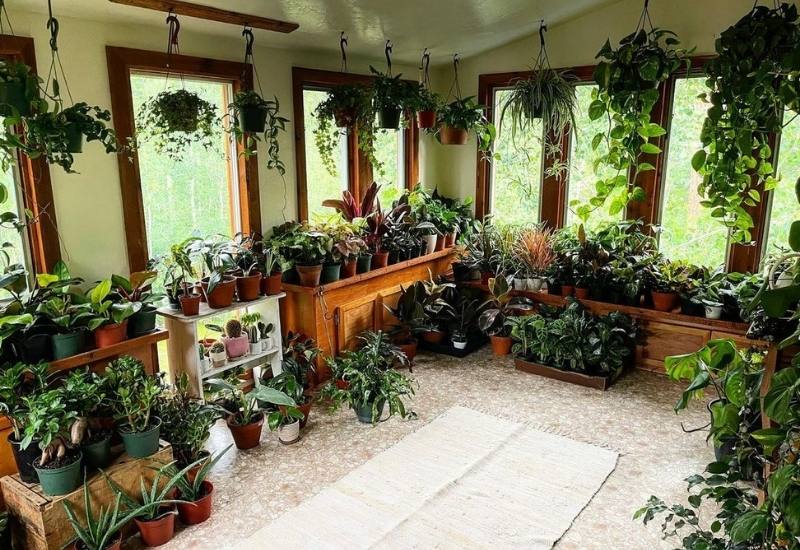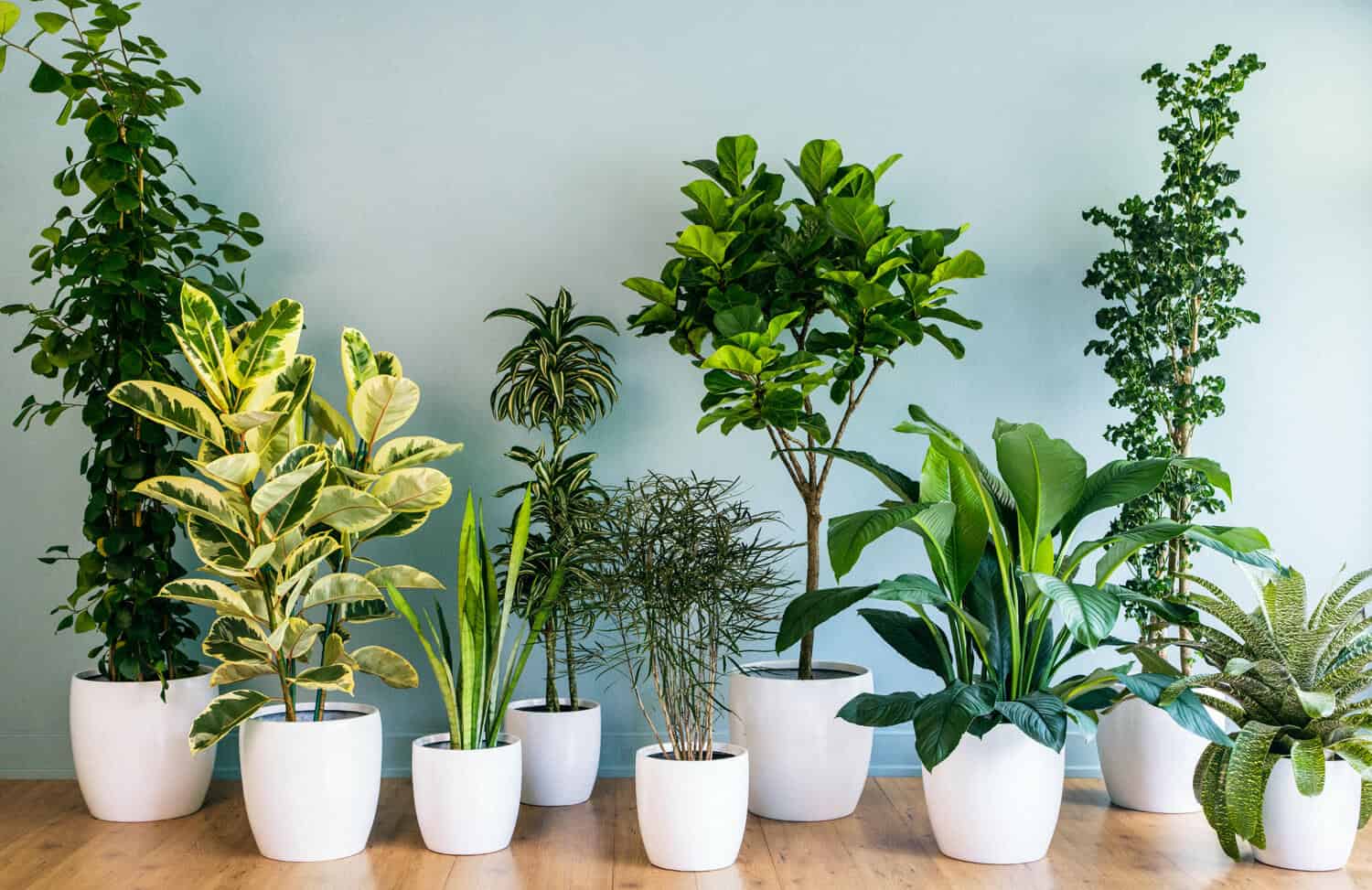Uncover the Secrets of Low-Light Indoor Plants and Exactly How They Improve Your Atmosphere
Low-light interior plants have actually amassed increasing interest for their one-of-a-kind capacity to boost both visual charm and ecological high quality within homes and work environments. These durable types, consisting of the Serpent Plant and Tranquility Lily, not just prosper in difficult illumination conditions however also play an essential duty in air filtration and psychological wellness. Comprehending the certain advantages and treatment demands of these plants can substantially influence your home. As we explore the intricacies of their benefits, you might discover understandings that might transform your surroundings in unanticipated ways.
Benefits of Low-Light Indoor Plants
Although many individuals assume that interior plants need plentiful sunshine to prosper, low-light indoor plants use a multitude of advantages that make them excellent for different settings. Among the key advantages is their flexibility; they can grow precede with restricted natural light, such as workplaces, cellars, or spaces with small home windows. This function allows individuals to boost their environments with greenery, adding to improved appearances without the need for comprehensive lights adjustments.
Moreover, low-light indoor plants can significantly enhance interior air quality by filtering hazardous contaminants and releasing oxygen, making living rooms healthier. Study has shown that certain selections can absorb pollutants, hence promoting a cleaner environment. Furthermore, they can improve psychological well-being by minimizing stress and anxiety and enhancing performance. The existence of plants has been connected to better sensations of tranquility and emphasis.
Furthermore, low-light plants frequently require less maintenance than their sun-loving counterparts, making them excellent for active people or those brand-new to horticulture. Their strength permits them to love marginal treatment, therefore supplying a gratifying experience for plant enthusiasts and novices alike. In recap, low-light indoor plants offer both aesthetic and practical objectives, making them useful additions to any room.
Leading Low-Light Plant Varieties
Low-light interior plants can be found in a range of species, each offering distinct qualities and benefits matched for dim environments. Amongst one of the most prominent varieties is the Serpent Plant (Sansevieria), understood for its air-purifying capabilities and architectural fallen leaves. This resistant plant flourishes on neglect and can endure a variety of light problems.
Another exceptional choice is the ZZ Plant (Zamioculcas zamiifolia), which features glossy, dark environment-friendly fallen leaves and is highly drought-tolerant. Its versatility makes it a preferred for workplaces and homes with restricted sunshine.
The Pothos (Epipremnum aureum) is likewise a top challenger, with its tracking creeping plants and heart-shaped leaves - Best low-light indoor plants. This functional plant can be educated to climb or waterfall, adding aesthetic interest to any type of room

Care Tips for Low-Light Plants
Taking care of low-light interior plants needs a nuanced understanding of their certain requirements to ensure ideal growth and vigor. It is necessary to select the ideal potting mix, as a well-draining dirt is vital to avoid origin rot. A blend created for houseplants, typically including peat moss and perlite, functions well for many low-light selections.
Watering is another key element of care. Low-light plants typically call for less constant watering contrasted to their sun-loving counterparts. It is recommended to examine the leading inch of dirt; if it feels dry, it's time to water. Overwatering can bring about complications such as mold and root decay.
Fertilization must be approached with caution. During the growing period, a watered down liquid fertilizer can be used monthly, but in winter season months, several low-light plants enter dormancy and need little to no fertilizing.
Last but not least, it is necessary to periodically clean the leaves to eliminate dust, permitting far better light absorption. By sticking to these treatment ideas, you can grow a successful environment for your low-light indoor plants, enhancing both their appearance and longevity.
Enhancing Air Quality With Plants
Interior plants play a Go Here considerable function in improving air high quality within homes and workplace. Through the procedure of photosynthesis, these plants soak up carbon dioxide and release oxygen, adding to a healthier atmosphere. Furthermore, specific low-light indoor plants possess the ability to filter damaging toxins, such as trichloroethylene, benzene, and formaldehyde, which are typically found in interior settings.

Moreover, the presence of interior plants can raise moisture degrees, which aids alleviate completely dry skin and respiratory system issues, further improving overall health. This capacity to improve air high quality not only promotes physical health yet additionally sustains mental wellness.
Incorporating low-light interior plants right into your living and working rooms can result in an extra invigorating and vivid setting (Best low-light indoor plants). Investing in these all-natural air cleansers is a basic yet effective strategy for boosting indoor air quality and promoting a healthier lifestyle
Creating a Tranquil Indoor Room
The integration of plants right into living spaces not just boosts air top quality however additionally adds to a serene their explanation atmosphere. Low-light indoor plants, such as snake plants and pothos, are specifically reliable in developing a tranquil setting, as they thrive in problems that may otherwise be unwelcoming for various other greenery. Their lavish vegetation gives a soothing aesthetic, decreasing stress and promoting relaxation.
Incorporating these plants right into your home or office can stimulate a feeling of tranquility and wellness. Purposefully placing them in areas where you spend substantial time, such as living offices or rooms, permits for an immersive experience with nature, which has been revealed to boost mood and cognitive function.
Moreover, the gentle activity of fallen leaves in reaction to air movement can develop a dynamic visual component that enhances the general setting. Consider utilizing a selection of plant elevations and structures to include deepness and interest to your area. With thoughtful positioning and treatment, low-light interior plants can transform any type of area into a calm sanctuary, cultivating not just aesthetic fulfillment yet also psychological and psychological health.

Final Thought
Incorporating low-light interior plants right into numerous atmospheres yields considerable advantages, including boosted air quality and boosted aesthetic allure. These sturdy varieties not only prosper in minimal light yet also add to a calming environment, advertising psychological and emotional health. By selecting suitable selections and carrying out proper care methods, people can successfully grow a serene indoor area that cultivates well-being and efficiency. The transformative power of low-light plants highlights their value in boosting both domestic and work-related settings.
Although numerous people think that interior plants call for bountiful sunshine to flourish, low-light indoor plants supply a multitude of advantages that make them excellent for numerous settings.Additionally, low-light indoor plants can dramatically boost interior air high quality by filtering harmful toxins and launching oxygen, making living areas healthier. Additionally, specific low-light indoor plants possess the capacity to filter dangerous contaminants, such as trichloroethylene, benzene, and formaldehyde, which are generally found in interior atmospheres.
Low-light interior plants, such as snake plants and pothos, are particularly see post efficient in developing a tranquil environment, as they prosper in conditions that might otherwise be unwelcoming for various other greenery.Including low-light indoor plants right into various atmospheres returns significant advantages, including enhanced air quality and improved visual allure.
Comments on “How to Care for the Best Low-Light Indoor Plants in Any Environment”